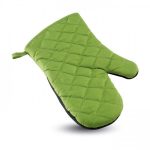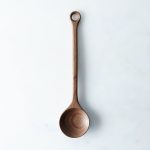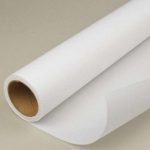
Q: What about plastic? Some of it cannot go in the microwave. How to know which plastics are good to heat in the microwave oven when reading labels is not an option?
Can I Microwave Plastic?
You need to be very careful. Remember that plastic must sustain the temperature of 130-140°С to be named microwaveable.
If you can’t read the label on the bottom of a plastic dish or cup (an icon with a schematic image of the microwave oven), put it off, replace food to any heat-resistant container, and forget about that plastic thing. It is absolutely unacceptable to put such material in the microwave.
We don’t mean that the container can easily change its shape or melt in the process of cooking or warming up food. But a low-quality plastic starts to decompose and form harmful substances thereby polluting the air and poisoning your food.
How to Determine High-Quality Microwaveable Plastic?
You are not prohibited to experiment with the things you pay your money for and in your own kitchen with your private microwave oven.
However, any plastic, especially low-quality one, isn’t something you really want to microwave, even for scientific purposes.
So here’s what you need to know to distinguish the high-quality plastic from cheap and harmful materials:
- Buy expensive plastic of a well-known manufacturer
- Even if the cheap plastic container has that ‘microwave-safe’ icon, you can’t be sure that it meets the safety requirements and the labels line up with reality
- Check the certificates of quality in the store to be 100% sure that your plastic for microwave is safe
- You can microwave either a polyamide or a polypropylene plastic
- Never microwave polystyrene or polyvinyl chloride, as well as polyethylene
Remember that any type of plastic, be it a high-quality dish or a low-quality cup, remains plastic and if you can avoid microwaving it, do so.
What if I Microwave Grilled Chicken in Plastic Container?
Please avoid microwaving plastic in the microwave oven with a grill mode.
In case you are interested in cooking something in the microwave using a plastic dish for this purpose, make sure you don’t.
The matter is that plastic is bad for cooking dishes which contain sugar or fat. These ingredients can easily get heated to temperatures at which plastic starts to deform and melt.
Heating small amounts of food is possible without any containers.
For example, wrap your grilled chicken in a parchment paper or linen napkin to warm it up.
You can also use special reusable bags or a glass-ceramic dish for the microwave oven. By doing so, you will protect yourself from the unpleasant smell of polyethylene which will spoil your meal.
Is It Dangerous to Microwave Lunch in Plastic?
Most physicians are against cooking food in the microwave, drawing attention to the use of the microwave oven for heating the dishes exclusively.
Just a few reasons:
- Both plastic and the meal warm up and start releasing and absorbing toxins under the influence of microwaves
- Plastic contributes to the release of food carcinogens
- Microwaving plastic causes food poisoning
- Increased blood pressure is the result of microwaved food consumption
If you eat such meal, you might feel nauseated and dizzy. You do not even associate a bad state of health with the way the food is cooked.
If you use plastic dishes for heating food daily (e.g. warm up your lunch in the office), your body will gradually get used to toxins and stop responding to them.
However, they accumulate in the liver, which sooner or later may cause liver failure.
Can I Microwave Plastic Baby Bottles?
In the modern conditions, millions of new mommies around the world use microwaves to heat milk, because babies don’t like to wait and microwave is a really fast device to satisfy them.
But not all of the parents question themselves whether it’s safe to microwave plastic baby bottles.
Yes, it is possible to microwave baby bottles for no more than 10 seconds and with a few precaution measures:
- Don’t microwave breast milk if you don’t want to destroy its immunological features
- Always shake the bottle after heating as the milk warms up unevenly and may cause burning
- Check the temperature of the milk or formula after microwaving (use food thermometer or drip some milk on the wrist)



